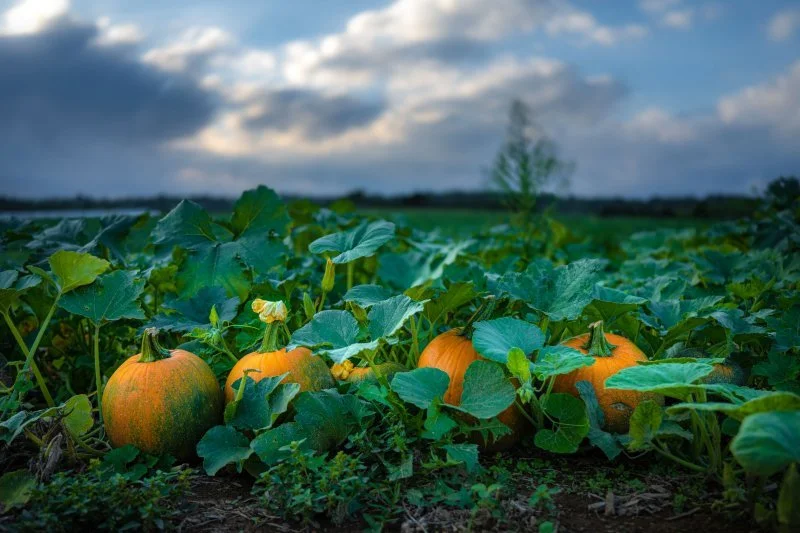The Pumpkin
The Pumpkin’s Lineage: From Ancient Seeds to the Heart of Halloween
Roots Older Than Autumn
Before the pumpkin was carved, candled, and set on cottage porches across North America, it was a seed in the hands of early farmers.
Archaeologists trace its ancestry back over 7,000 years to Central and South America — where wild gourds grew thick-skinned and bitter until early peoples coaxed them, season after season, into the plump, sweet fruit we now know as Cucurbita pepo.
Native tribes from the Iroquois to the Wampanoag grew pumpkins alongside corn and beans — the “Three Sisters” — a trio that sustained families through the long winters. They roasted the flesh, dried the strips for storage, even wove the rinds into mats.
It wasn’t decoration then; it was life itself.
A Patchwork Family Tree
Today, pumpkins have branched into a patchwork of personalities — each with its own hue, texture, and charm.
Sugar Pie – The baker’s choice. Smooth, dense, and sweet, perfect for purées and custards.
Jack O’Lantern – Classic, ribbed, and bright orange; bred for carving and display.
Cinderella (Rouge Vif d’Étampes) – A French heirloom that looks like it rolled out of a fairy tale carriage.
Jarrahdale – Misty blue-gray skin from Australia, with deeply ribbed flanks and golden interior.
Baby Boo & Munchkin – Miniatures that fit in the palm of your hand; adorable for tablescapes and wreaths.
Kabocha & Long Island Cheese – Old-world workhorses beloved by chefs for their rich flavor.
Each one tells a story — of climate, taste, and the human urge to cultivate beauty from the earth.
Designing a Little Pumpkin Patch
There’s a certain cottage magic in growing your own pumpkins — the slow transformation from curling green vines to round autumn jewels. You don’t need acres of farmland; a sunny corner of your yard (or even a raised bed) will do.
Here’s how to design your own patch with both form and function:
Choose Your Spot:
Find a sunny area with at least 6–8 hours of light daily. Pumpkins love warmth and wide-open soil.Shape the Space:
Create gentle mounds or raised beds — three feet apart for mini varieties, six to eight for larger ones. The mounds help roots warm quickly and improve drainage.Mix Your Medium:
Enrich your soil with compost and well-rotted manure. Pumpkins are heavy feeders; think “kitchen garden meets art studio.”Sow and Tend:
Direct-sow seeds after the last frost. Once vines sprawl, guide them along paths or low trellises. Hand-pollinate if bees are scarce — a small brush can move pollen from male to female blooms.The Art of Arrangement:
Mix sizes and shades — white Baby Boos near borders, knobby knuckleheads by the gate. Add sunflowers or marigolds for a painterly mix of golds and greens.Harvest & Cure:
Wait until the rinds are firm and the stems turn woody. Cut with a few inches of vine still attached, then cure them in the sun for a week or two.





